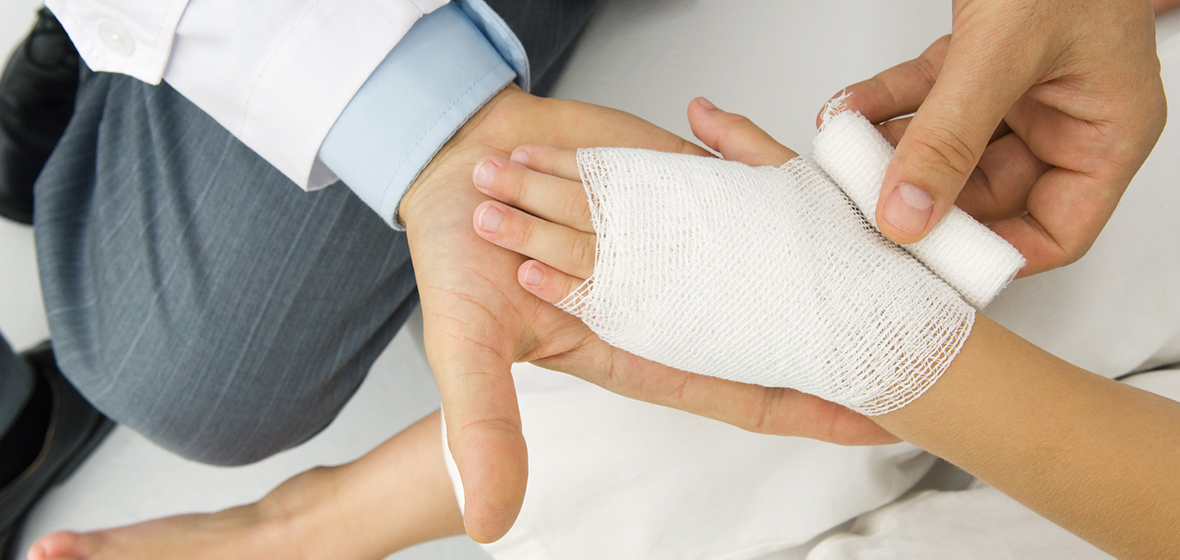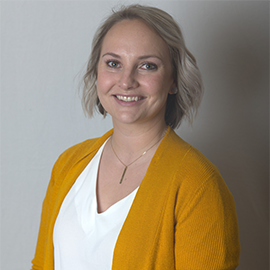
If you have a burn that requires you to be a patient with the UofL Health – Outpatient Burn Clinic, here are some tips to properly care for your burn at home.
It is important to follow the dressing change instructions the Outpatient Burn Clinic team gives you. Clean your burns with each dressing change.
Cleaning Your Burns
- To clean your burns, use a mild soap, such as baby soap, until your wounds have healed. You may use clean water if soaps are irritating. To clean wounds, let water run over the area or pat the area with a damp, clean washcloth.
- Only shower or take sponge baths. Do not take a tub bath. Submerging your body in water while you have open wounds can spread bacteria from other areas of the body into your open wounds.
Preventing Infection
- To prevent infection, clean wounds daily or as directed by your nurse or provider.
- Apply dressings as instructed. Keep open wounds covered until healed.
- Wash your hands before and after dressing changes.
- If you have pets, minimize your exposure to them until you are healed.
- Avoid contact with others who are sick or have infections.
- Do not swim in pools, lakes or other bodies of water until burns have healed.
- Check with your provider before returning to work.
Signs of Infection
Open burns/wounds are at a higher risk for infection. Infection can delay wound healing, increase scarring and lead to other potential complications. Please contact your primary care provider or go to an emergency room if you experience any of the following:
- Increased pain that was once controlled
- Foul odor from your wounds
- Increased wound drainage
- Formation of pustules (small circular sores with a yellow or white center) on or around the burn/wound
- Redness and swelling around the burn/wound
- Opening of wounds that had already healed or wounds that are not healing
- Oral temperature at or above 100.5 degrees Fahrenheit
Changes in the Skin
Once healed, your skin will continue to “remodel” over the next two years. Depending on the depth of your burn injury and your personal genetics, you may experience scarring, pigment changes, skin tightening, chronic pain and itching and sensitivity where you were burned.
Skin that has been injured by a burn is weaker and may tear or blister more easily. Be kind to your skin and keep it protected. Talk to your provider if you have questions or concerns.
Care in the Sun
For the first two years after your burns/wounds have healed, your skin will be very sensitive to the sun and can easily burn. In some people, hypersensitivity to the sun may be permanent. To protect yourself in the sun:
- Minimize sun exposure.
- Keep your skin covered with long-sleeved shirts, pants and wide-brimmed hats.
- Wear SPF 50 sunscreen and reapply frequently according to the instructions on the container (at least every two hours if not more frequently).
Pain Control
Burn injuries are painful. Your provider may have prescribed medication to treat your pain. To get the maximum benefit, take your pain medication 30 to 60 minutes before changing your dressing and before your Outpatient Burn Clinic appointments.
Take medications as prescribed by your provider. Do not drive or operate heavy machinery while taking pain medication. Many pain medications contain acetaminophen (Tylenol®). Speak with your provider before adding acetaminophen or ibuprofen to your pain regimen.
Prevent Swelling
Elevation and compression can help decrease swelling and pain.
- Head and neck burns: Elevate your head with pillows or in a recliner when sleeping.
- Hand or arm burns: Use pillows to raise your hand or arm above the level of your heart. ACE wraps or compression sleeves may also help decrease swelling. Only use ACE wraps or compression sleeves if the Outpatient Burn Clinic instructs you to use them.
- Foot or leg burns: When sitting or in bed, use pillows to elevate your legs. ACE wraps or compression sleeves may also decrease swelling. Only use ACE wraps or compression sleeves if the Outpatient Burn Clinic instructs you to use them.
Movement/Stretching
While your burn wounds are healing and for two years after your wounds have healed, stretching the injured skin is crucial. Your skin will tighten as it heals. You must exercise and stretch your burns to not lose function.
- Use your burned hand, arm or leg.
- Your therapist may give you range of motion exercises to do at home. Please do these as instructed.
- If your burned skin is not stretched and exercised regularly, the tightness may lead to loss of function. Additional surgery may be required to correct these problems.
Lifestyle Changes
Good nutrition is required for proper wound healing. A high-protein, high-calorie diet is recommended. Take daily vitamins and drink at least eight ounces of water a day.
Some common protein-rich foods are:
- Meat (beef, chicken, pork or fish)
- Eggs
- Soy
- Dairy (milk, cheese or yogurt)
- Peanut butter
If you smoke or use nicotine, we highly recommend stopping. It will delay healing of burns.
Support Resources
Experiencing a burn can be very emotionally stressful. Anxiety, depression and post-traumatic stress disorder can develop.
Please do not be afraid to discuss your feelings with your provider, nurse or burn social worker. We have multiple resources to aid in your recovery.
Important Contact Numbers









